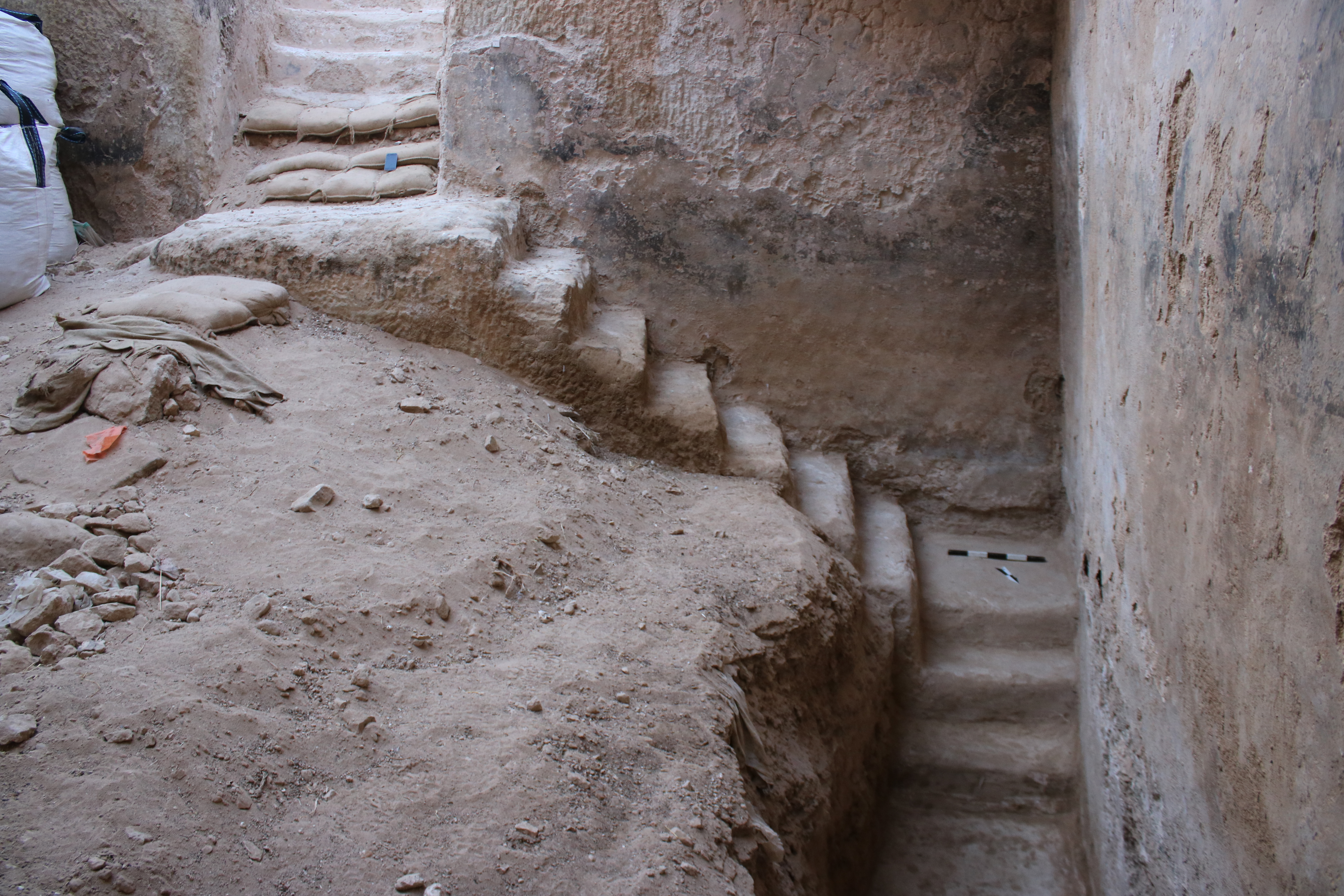Biblical-Era Etchings of Ships Discovered in Israeli Desert

Surviving as faint etchings after 2,000 years, 13 ships decorate the walls of a cistern in Israel.
The cistern was discovered in the city of Be'er Sheva in the desert of southern Israel, where archaeologists were excavating in advance of the construction of a new neighborhood. They stumbled upon a depression in the ground that turned out to be a cistern, a large reservoir used to store water. The cistern is nearly 40 feet (12 meters) deep and about 16 feet by 18 feet (5 by 5.5 m) across.
Stairs lead down to the bottom of the cistern. Along the walls are faint lines, which archaeologists with the Israel Antiquities Authority (IAA) recognized as etched-in drawings. The researchers discovered etchings of 13 ships, one sailor and several animal-type figures called zoomorphs.[See Photos of the Ancient Cistern and Ship Carvings]
The ships are very detailed, according to IAA rock-art specialist Davida Eisenberg-Degen. They're realistically proportioned and show details consistent with the ship-building of the day. Based on the hewing and plastering of the cistern stairs and the style of the entire reservoir, the archaeologist concluded that the cistern was built in the first or second century, making the reservoir nearly 2,000 years old.
This would have been during the period of Roman rule in Israel. The remains of a Roman settlement lie about 2,600 feet (800 m) away from the site of the newly discovered cistern, Eisenberg-Degen said in a statement distributed by the IAA. The cistern will be preserved as part of a green space in the new neighborhood development, the agency reported.
It's unclear when the cistern fell out of use, but it was likely not that long ago, the IAA said. According to the authority, among the rubble and dirt found filling the cistern were ceramic fragments, ammo shells and pieces of weaponry dating to World War I.
- The 10 Biggest Stories in Biblical Archaeology
- Photos: Ancient Rock Art Sheds Light on Israel's 'Dark Ages'
- Photos: Biblical-Era Fortress Discovered in Israel
Originally published on Live Science.
Get the world’s most fascinating discoveries delivered straight to your inbox.

Stephanie Pappas is a contributing writer for Live Science, covering topics ranging from geoscience to archaeology to the human brain and behavior. She was previously a senior writer for Live Science but is now a freelancer based in Denver, Colorado, and regularly contributes to Scientific American and The Monitor, the monthly magazine of the American Psychological Association. Stephanie received a bachelor's degree in psychology from the University of South Carolina and a graduate certificate in science communication from the University of California, Santa Cruz.



